Three-year-old Dawsey Vainner loves to go for walks with his father Dan and look at the trees.
What he loves even more than walks is watching the sun rise over downtown Grand Rapids.
He and his dad catch as many as possible.
They perch atop a hill on the West Side of Grand Rapids and patiently wait for first light.
“The Highlands at Blandford Nature Center is one of their favorite spots,” Dawsey’s mom Jenna said. “We even have a picture frame dedicated to Dawsey sunrise pictures.”
Dawsey had a rough start. He was diagnosed with several rare conditions that require regular visits to the hospital.
At about 18 weeks gestation, Jenna had an ultrasound at Corewell Health’s Spectrum Health Maternal Fetal Medicine Office.
Doctors suspected she may have had a blood clot in the umbilical cord, but instead it showed that Dawsey had an omphalocele–his bowel was outside of his abdomen.
He also had polydactyly, or extra digits attached to his pinky fingers.
“Since there were two growth abnormalities, they thought it might be genetic,” Jenna said.
The family had every genetic test available performed, but all came back normal.
“At that point it was just a waiting game,” Jenna said. “We just had to wait and see how he developed.”
At his own pace
Dawsey spent his first month of life in the Gerber Foundation Neonatal Center (NICU) at Corewell Health’s Helen DeVos Children’s Hospital, making progress each day.
Doctors successfully removed the extra digits on his fingers and repaired the omphalocele, but he also had issues feeding.
“Every day was like learning something new about him,” Jenna said. “He had a rougher start to life I would say.”
They made visits to cardiology, nephrology, neurology and neurodevelopment and other departments.
“We saw a lot of specialists in his first months of life,” Jenna said.
Then the pandemic hit, making appointments even more difficult to juggle.
“Of course, this was the same time Dawsey had the worst feeding issues to date,” Jenna said. “He refused to eat and was losing weight. It was a very difficult time.”
This paired with the fact that he couldn’t hold his head up on his own or move his arms against gravity due to low muscle tone made life a challenge.
Dawsey went back to genetics for more testing and had whole exome testing done–the final overarching genetic test option.
“The challenge is some people get no answer, and others see a definitive diagnosis. And it takes months,” Jenna said.
The diagnosis they needed
The Vainner family was one of the fortunate ones to receive a definitive diagnosis.
At a year and a half, Dawsey was diagnosed with Au-Kline syndrome, an extremely rare disease that is known to affect about 80 people total worldwide.
Au-Kline syndrome generally presents with developmental delays and moderate-to-severe intellectual disabilities. Patients with this condition typically have weak muscle tone and can appear with facial features that may include a large and deeply grooved tongue, a broad nose with a wide nasal bridge, and a downturned mouth.
Greater access to genetic testing has the number of people presenting with this condition growing.
“It’s always a little hard to get a diagnosis of something, but after the initial tears I was really relieved that we got an answer,” Jenna said. “Before this we were constantly living in limbo not knowing what life would look like for Dawsey.”
The family since joined a group on social media for parents and grandparents of children with Au-Kline syndrome across the world.
“People post updates and things their kids are accomplishing. It is a really positive thing for us to lean on, and we even have a couple families we talk to regularly on Instagram. It’s nice to have someone to bounce ideas off of,” Jenna said.
Jenna and Dan are glad they can talk about Dawsey’s advances.
“It’s amazing to see his progress from six months to now,” Jenna said. “I’m excited to see how much all of the different therapies will further benefit him in the long run.”
Learning his environment
Dawsey is a very happy kid and is continuing to learn his environment. He’s realizing he can crawl and go get things or even ask for things.
He loves to point at things people are eating. And he likes to lick foods.
“Barbeque potato chips and French fries get him so excited,” Jenna said. “He claps and smiles, even if he can’t eat them.”
Dawsey is opinioned and loves books.
“He loves Little Blue Truck or Tap the Magic Tree, anything interactive where we have to tap the page,” Jenna said. “He’s also obsessed with Clifford.”
Jenna works at a library and said the fact that he loves books warms her heart.
“He loves to pull books off the shelves, so we set them on the ground for him,” she said. He then crawls to his favorite books.
“We are so used to him being the kid that we need to carry over or help interact with things, but now he has grown so much,” she said.
Dawsey is working on learning sign language as well as an iPad program in hopes to help his communication abilities, she said.
‘As unique as his diagnosis’
Dawsey visits the hospital once a week with bundled appointments for speech, occupational therapy and physical therapy.
“His physical therapist has been so helpful,” Jenna said. “He knows Dawsey so well and has known him since he was just six months old. It’s so nice to have that connection.”
Andrew Harrington PT, DPT, board-certified pediatric clinical specialist with Helen DeVos Children’s Hospital Rehabilitation Services, had good things to say about Dawsey’s progress.
“Dawsey possesses many qualities that are as unique as his diagnosis,” he said. “He is a role model for anyone he encounters to joyfully persevere through any challenges they may face while slowing down to take in the everyday treasures of life such as watching a bird flying overhead, reading a good book or taking in a sunrise.”
Harrington and Dawsey work on walking on the treadmill, Dawsey in his LiteGait walker and sneakers with yellow lightning bolts.
They peek out the windows at traffic as Dawsey takes steps.
“We’ve been working on helping him stand more independently,” Harrington said. “I’m giving him less support and he’s able to stand at a table with his arms now. He’s sitting up, crawling, and moving his arms and legs all over the place.”
Harrington said he never puts limits on what Dawsey is going to accomplish in the future.
“We celebrate every little success and look forward to what’s to come.”

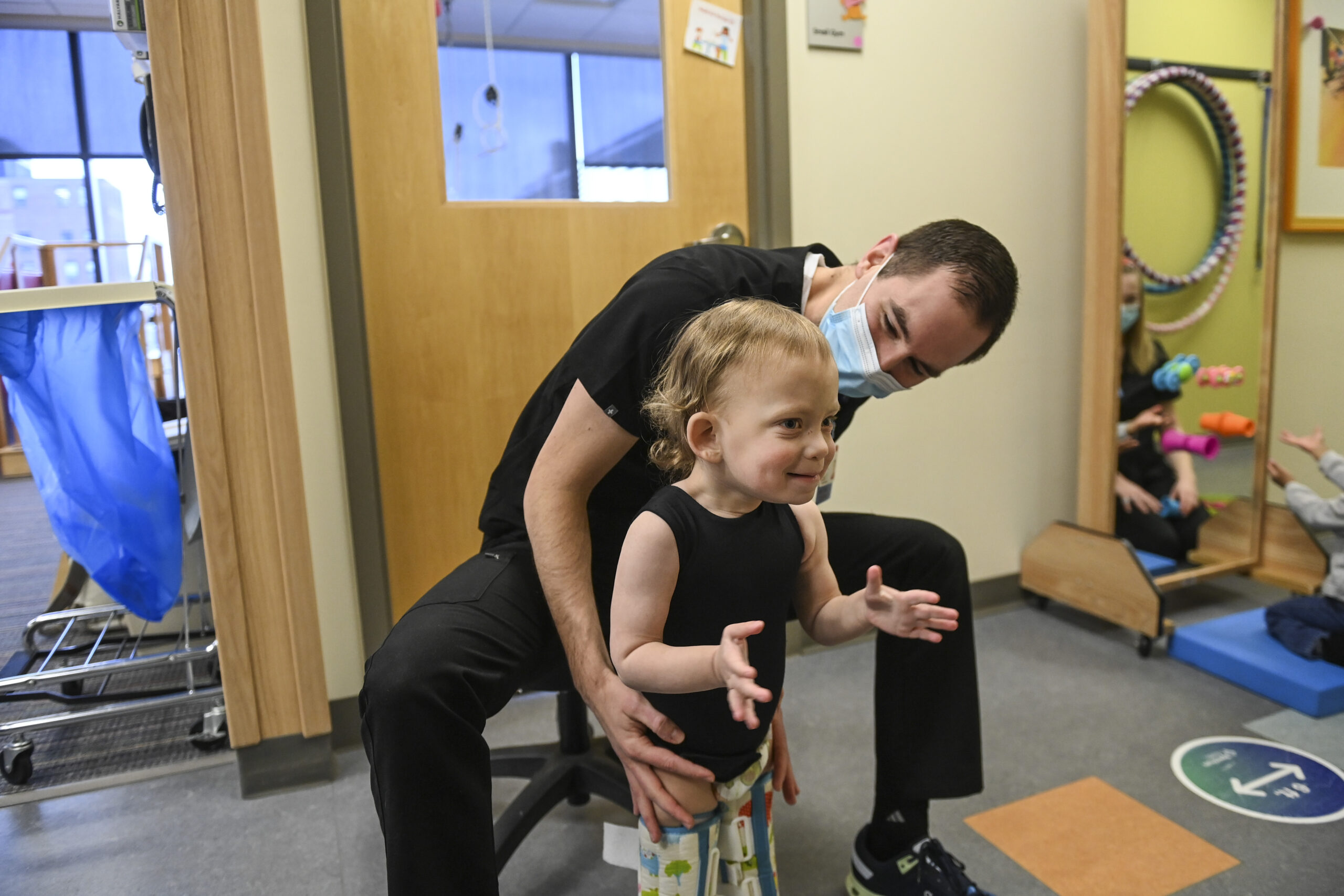

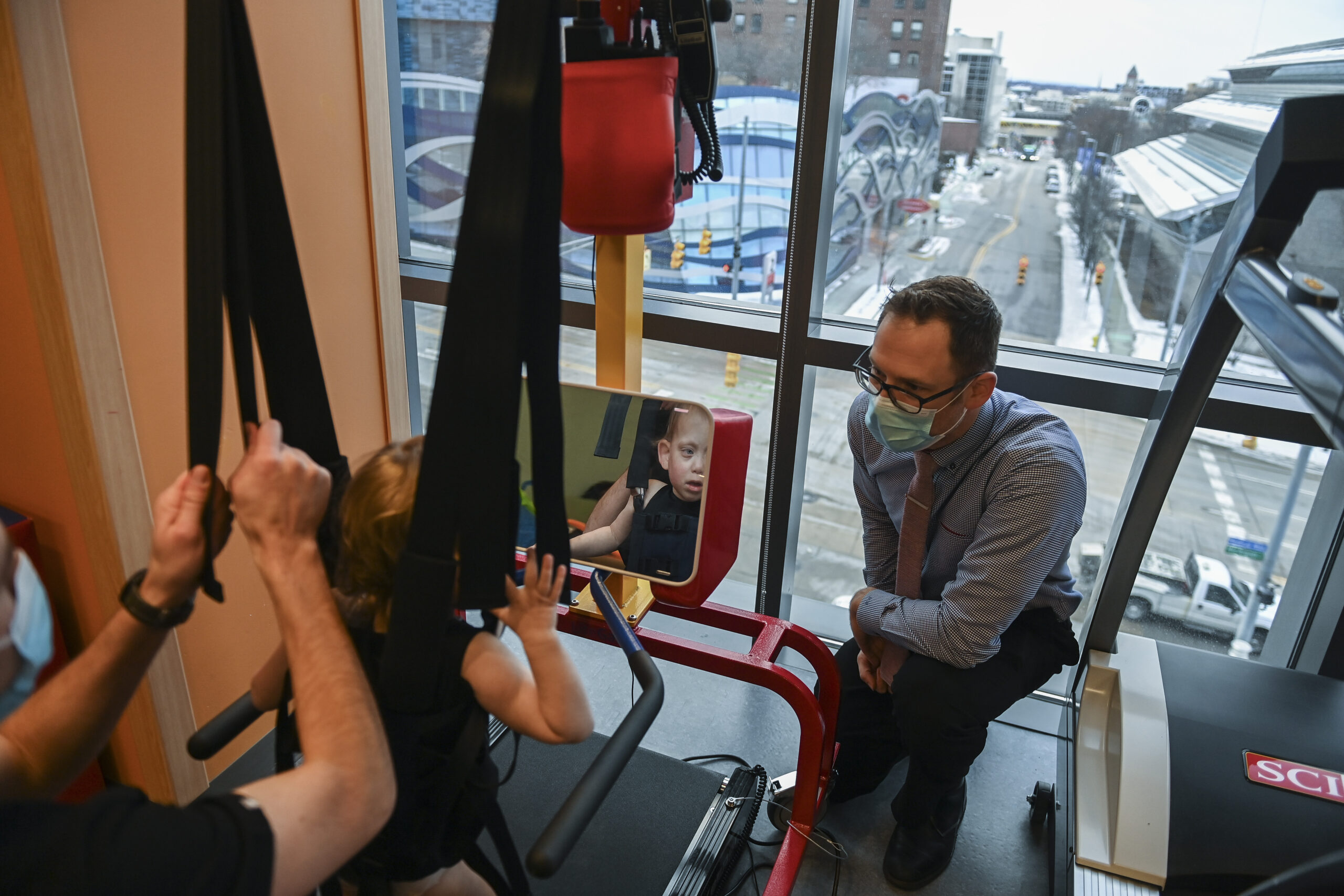
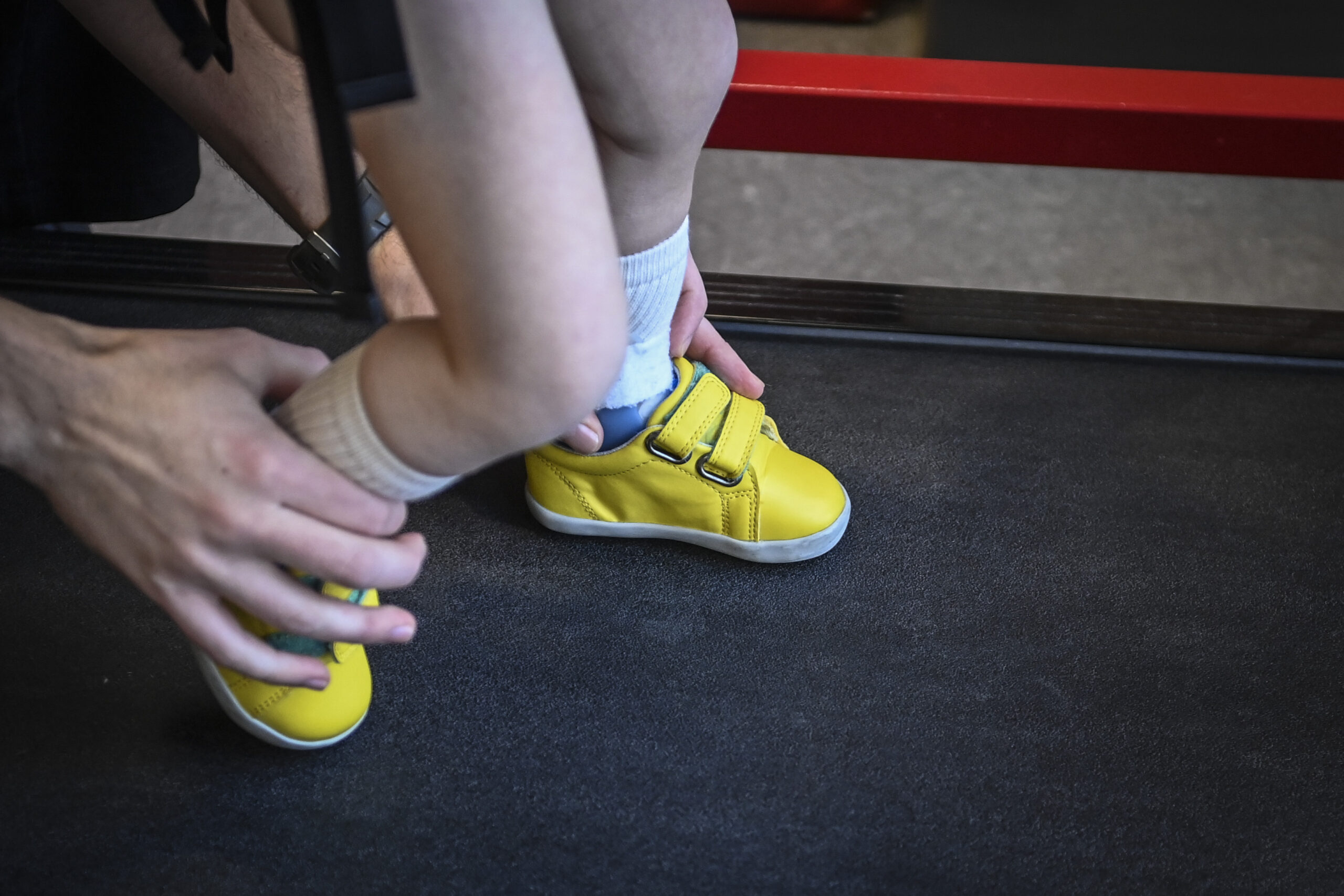
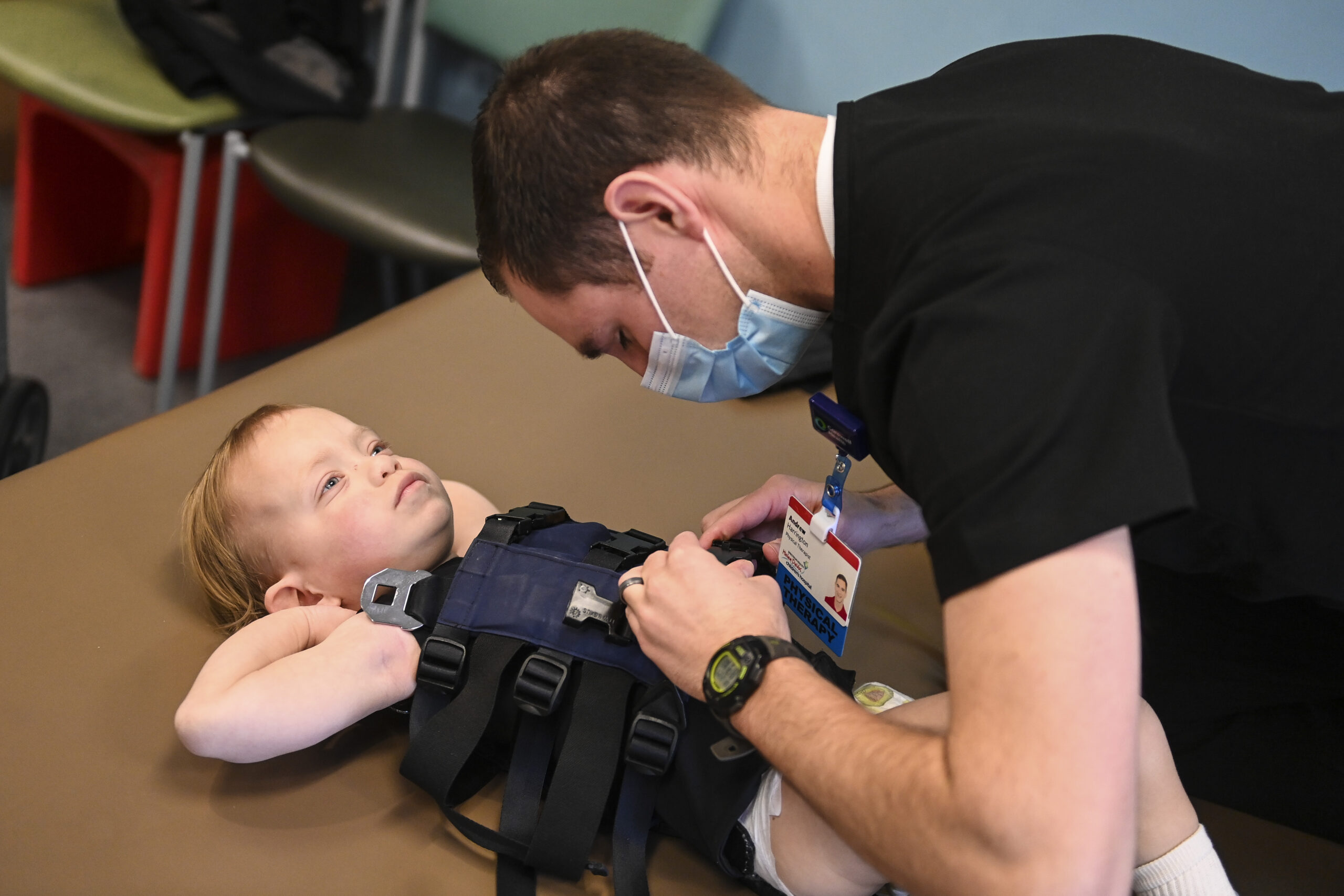





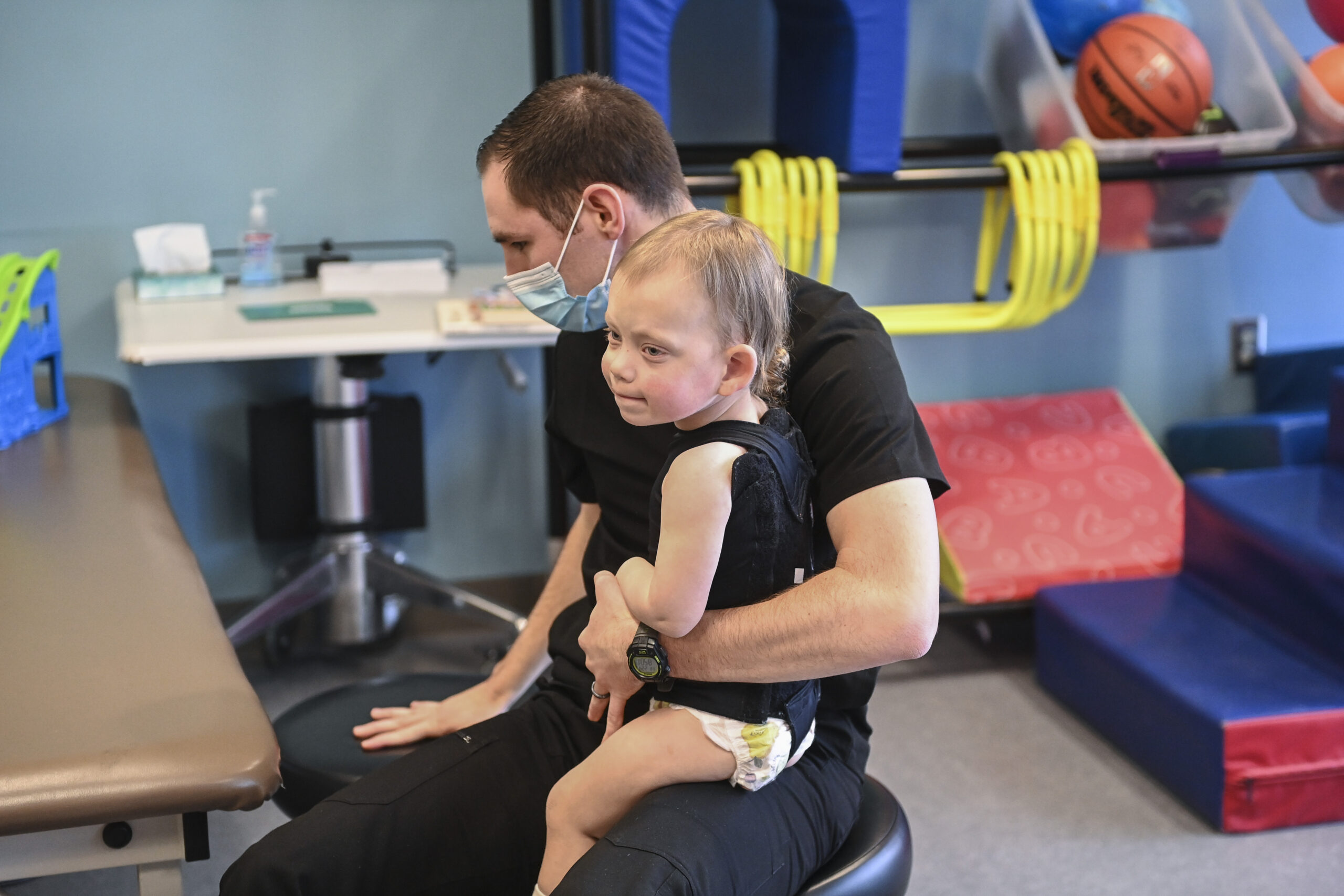

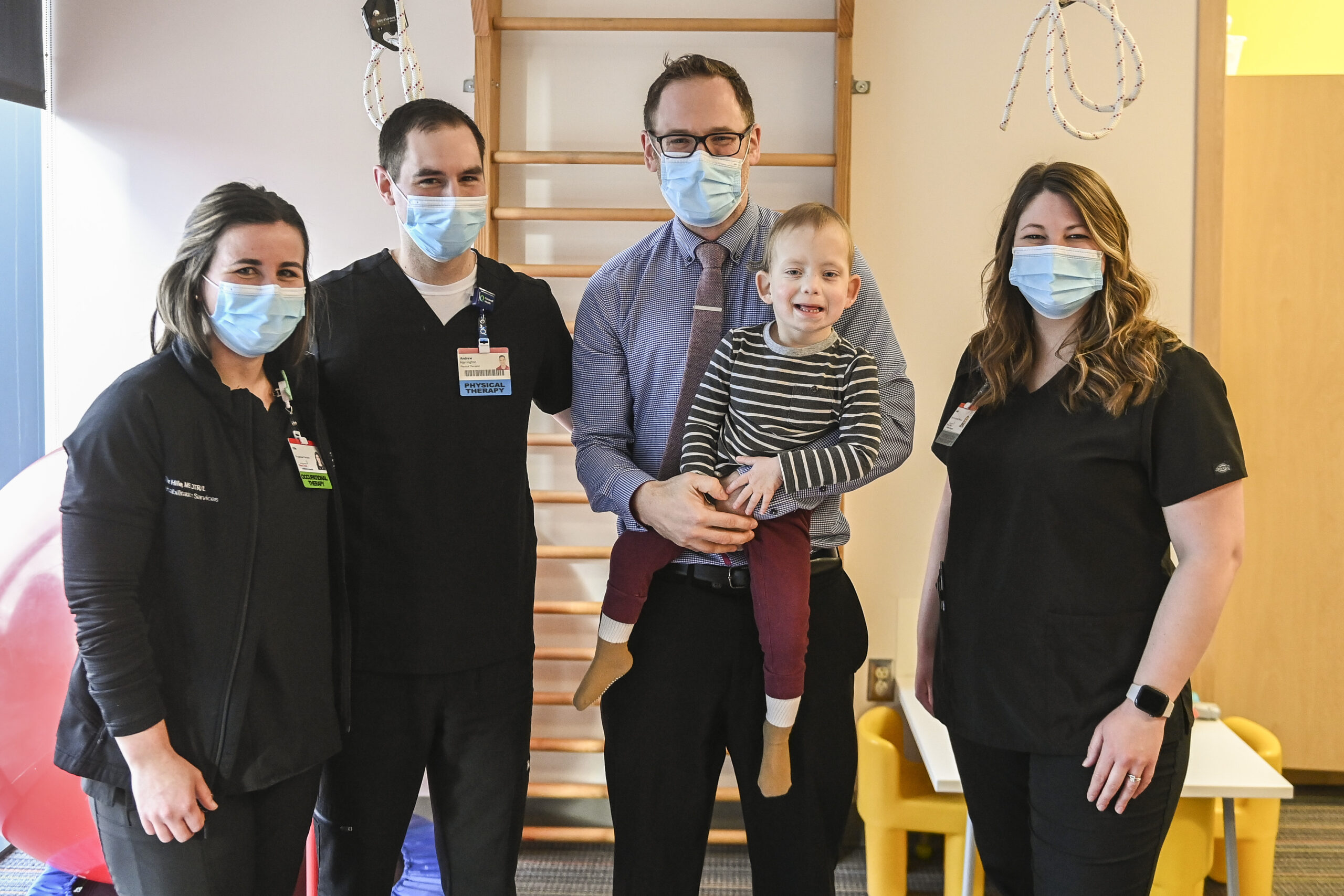


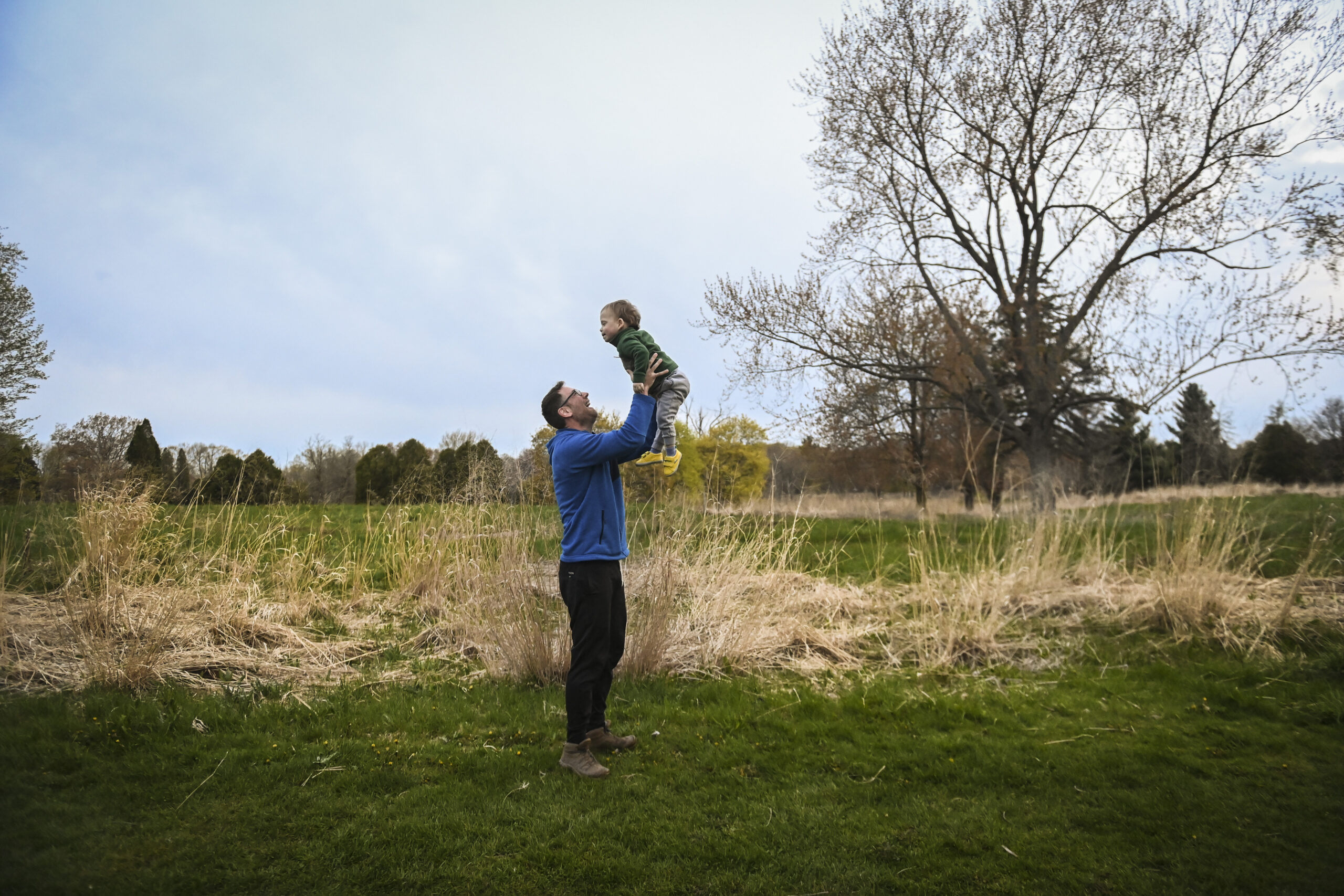
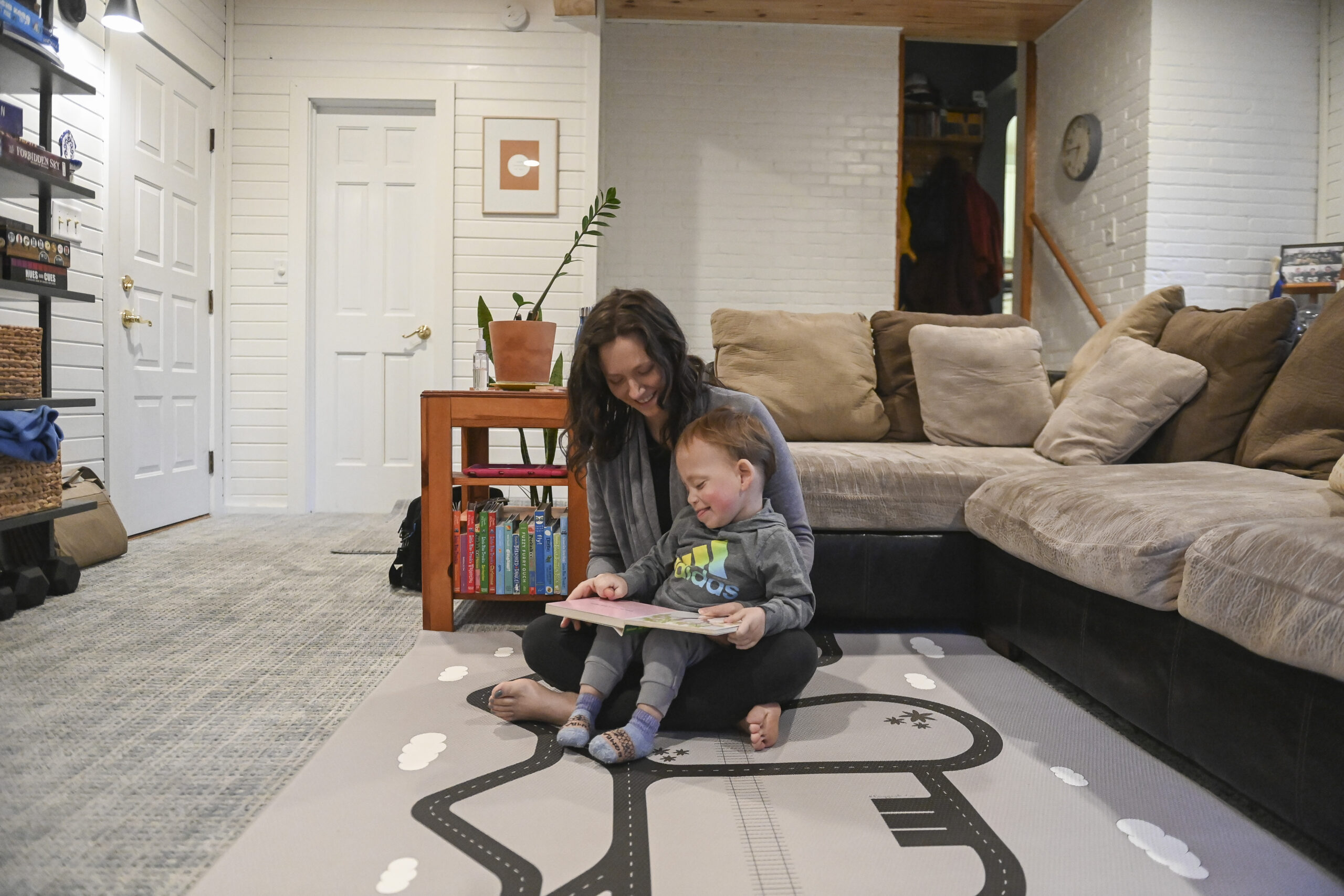
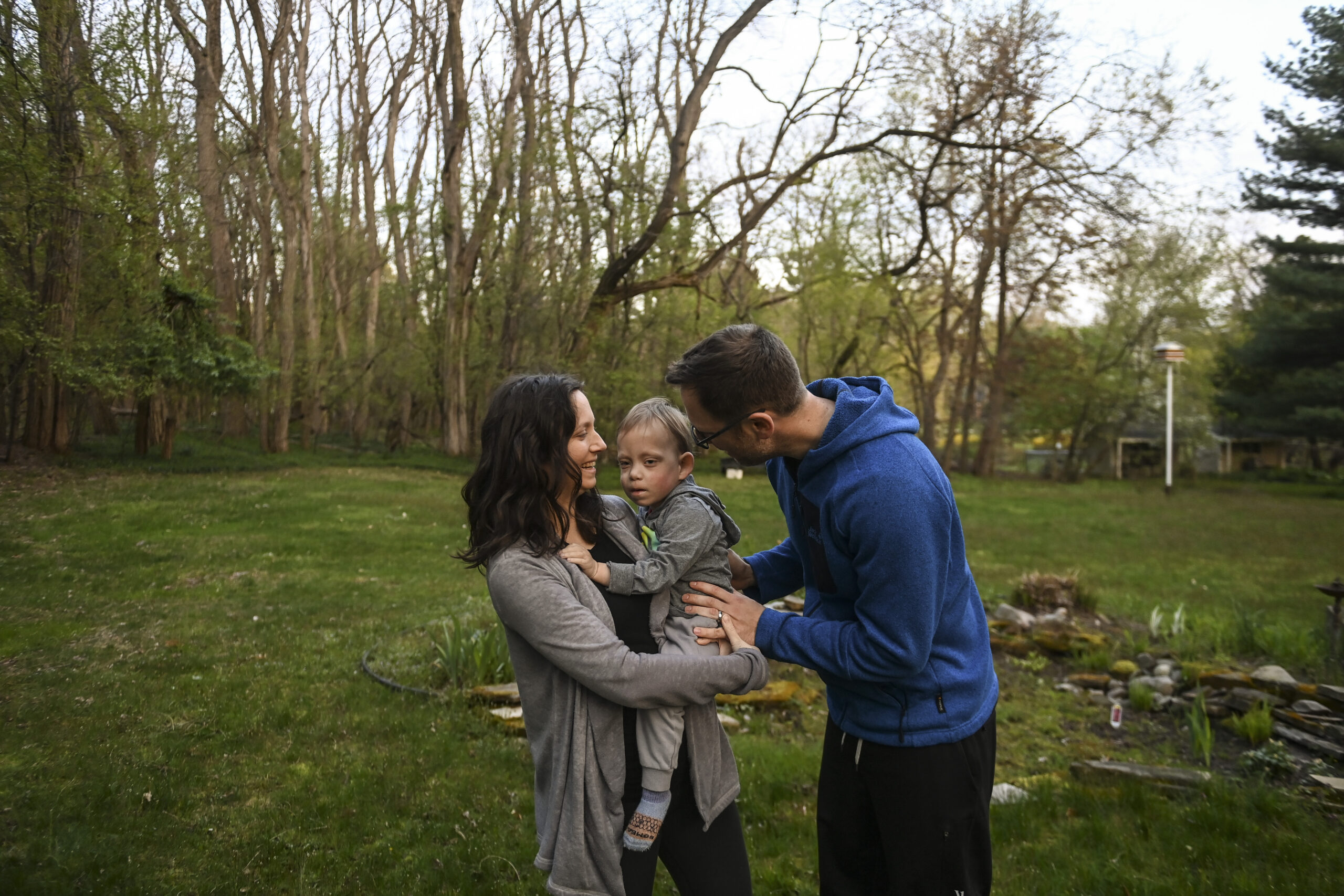
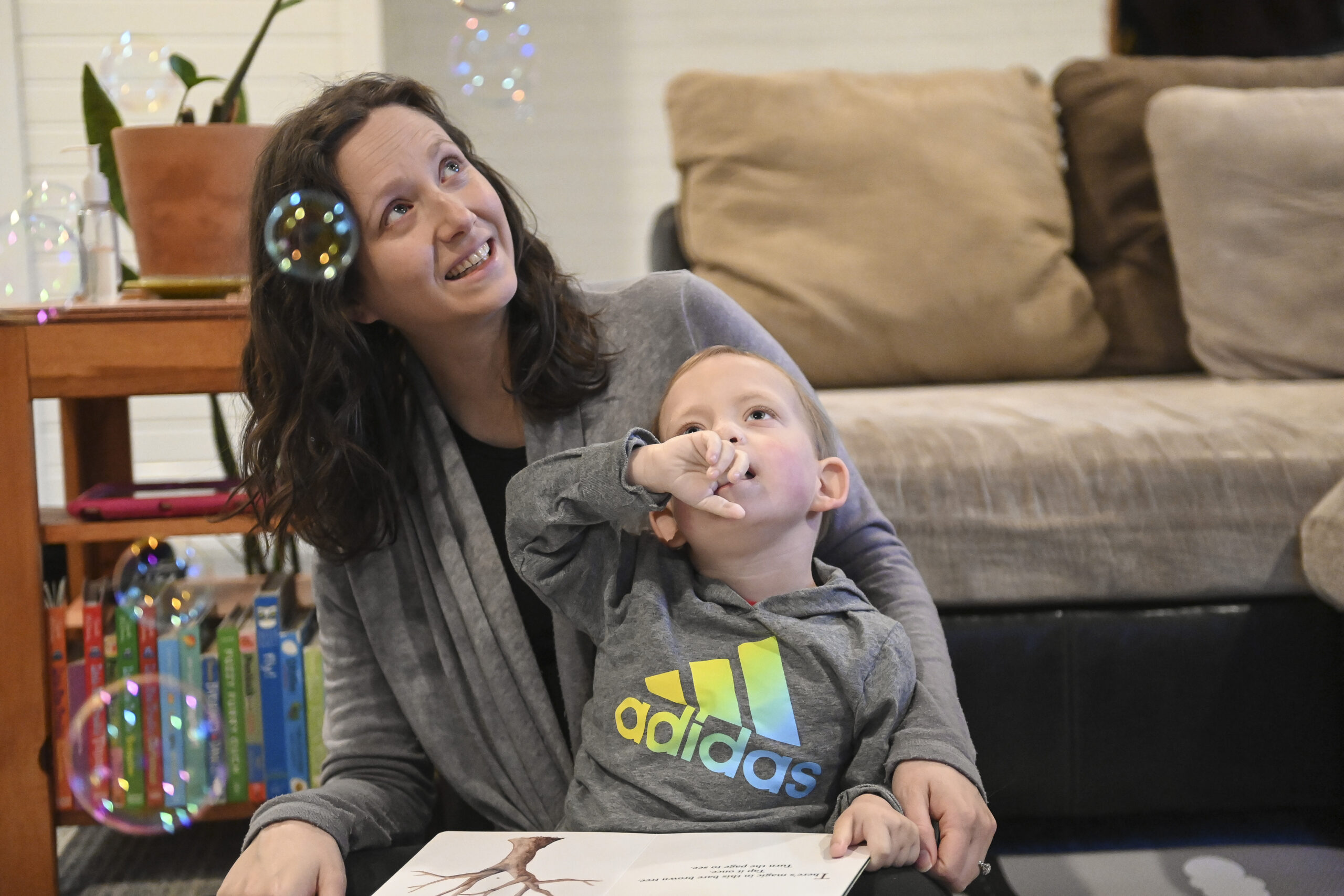
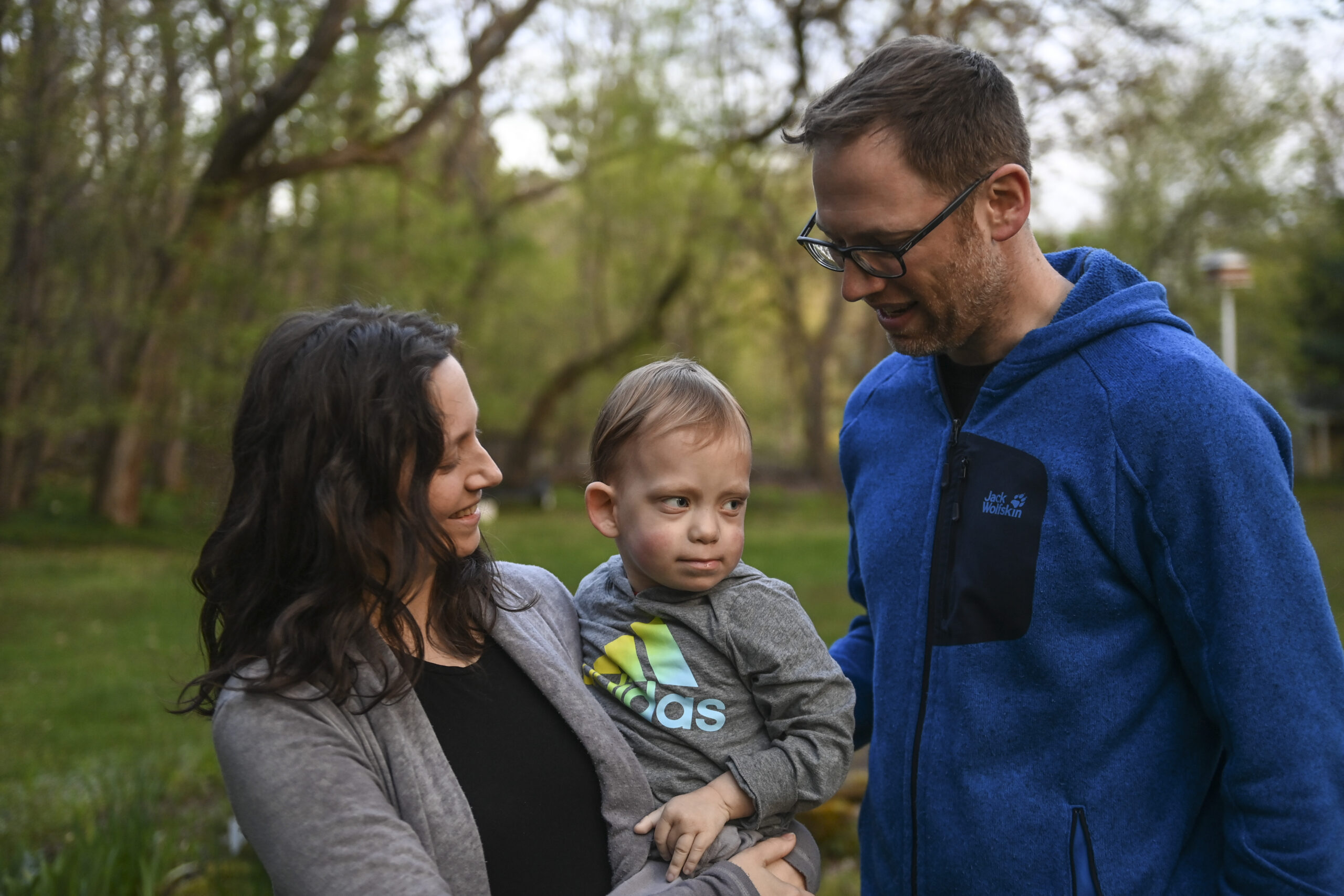
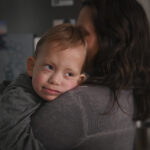

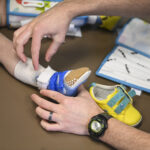
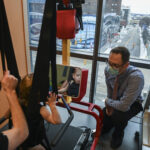

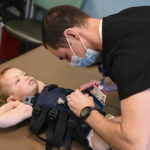
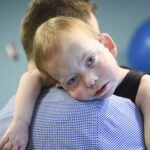














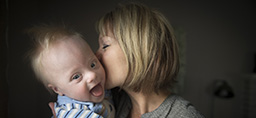 /a>
/a>
 /a>
/a>
 /a>
/a>
Great Story. Adorable little boy. Nice pictures. Would love to see a video of him walking on the treadmill.
Beautiful work Taylor!